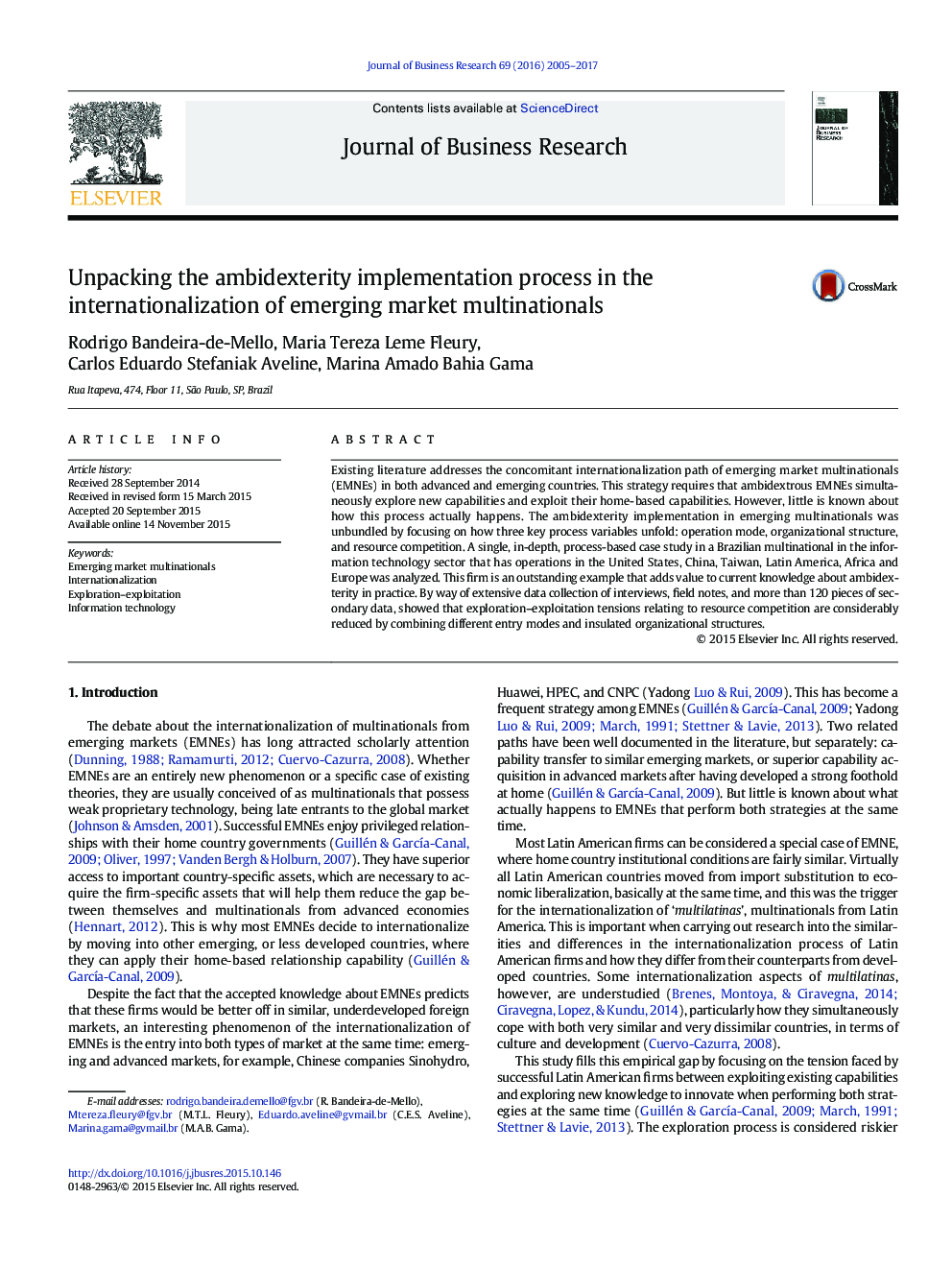| Article ID | Journal | Published Year | Pages | File Type |
|---|---|---|---|---|
| 1016926 | Journal of Business Research | 2017 | 13 Pages |
Existing literature addresses the concomitant internationalization path of emerging market multinationals (EMNEs) in both advanced and emerging countries. This strategy requires that ambidextrous EMNEs simultaneously explore new capabilities and exploit their home-based capabilities. However, little is known about how this process actually happens. The ambidexterity implementation in emerging multinationals was unbundled by focusing on how three key process variables unfold: operation mode, organizational structure, and resource competition. A single, in-depth, process-based case study in a Brazilian multinational in the information technology sector that has operations in the United States, China, Taiwan, Latin America, Africa and Europe was analyzed. This firm is an outstanding example that adds value to current knowledge about ambidexterity in practice. By way of extensive data collection of interviews, field notes, and more than 120 pieces of secondary data, showed that exploration–exploitation tensions relating to resource competition are considerably reduced by combining different entry modes and insulated organizational structures.
